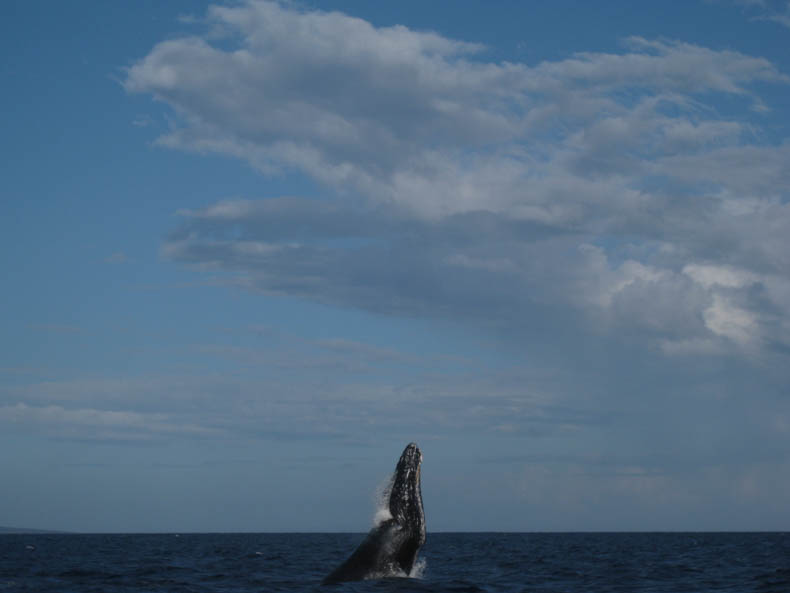
A little before Christmas I saw a stage production of Moby Dick. It was a wonderful production, by the Lookingglass Theater Company from Chicago, so creative in how it showed the depicted life at sea and on land. Actors climbed around in the rigging and dangled by their ankles. While the ship’s crew was thoroughly male, women portrayed the whales and the sea.
I wanted to go for two reasons: I like seeing people tell stories in innovative ways, and Moby Dick is my favorite book. I’m not sure I read the same Moby Dick as everyone else, though.
As I watched the actor playing Captain Ahab emote at length about his lust for revenge or whatever, I realized that the person who adapted Moby Dick for the stage made a very common mistake: thinking Moby Dick is a book about revenge or madness or evil or something.
No, no, no. Moby Dick is a book about whales.
Now, when I say Moby Dick is my favorite book, I’ve actually only read it once all the way through, years ago. And, when I make confident declarations about it, keep in mind that I have a terrible memory.
Also, though, I am right.
I have a copy in front of me right now. Here’s the chapter “Cetology,” in which you can learn the state of whale knowledge in 1851. (Which was better than you might think, because by then people had spent a lot of time sailing around sticking harpoons into them.) The narrator comes down confidently on the fish side of the fish-or-not debate, which is not how we divide up animals these days, but hey, categories are fuzzy. I had a heated debate once with an editor about whether sharks are fish. A cucumber is a fruit if you’re a botanist, but a vegetable if you’re a grocer.
Flipping through the book, I do see several parts that are not about whales. I probably skimmed those. They can’t be important.
Ah, here’s another chapter I remember fondly: “The Whiteness of the Whale.” In it, Melville, who was some kind of a genius, pulls off a 467-word sentence about the symbolic meanings of the color white. And then goes on about white and animals and whatnot for several more pages.
I suppose the really remarkable thing about Moby Dick is how it manages to be about a bunch of men on a whaling ship, but also about everything. It’s about the the color white. Towers. St. George and the dragon. A one-legged man with an attitude problem.
And it’s about whales. Take this, from the chapter The Tail:
Standing at the mast-head of my ship during a sunrise that crimsoned sky and sea, I once saw a large herd of whales in the east, all heading towards the sun, and for a moment vibrating in concert with peaked flukes. As it seemed to me at the time, such a grand embodiment of adoration of the gods was never beheld, even in Persia, the home of the fire worshippers. As Ptolemy Philopater testified of the African elephant, I then testified of the whale, pronouncing him the most devout of all beings.
I haven’t reread Moby Dick in part because I’m afraid all those other people will turn out to be right, that it actually is a book about manly feelings. But now that I’m flipping back through it…maybe I’d like to give this guy another chance. Let him tell me about whales, towers, and life all over again.
Photo: Helen Fields, Maui, 2011. That’s a humpback whale, not a sperm whale like Moby Dick, and if you want to know the difference, I recommend the chapter “Cetology.”
You are the only serious writer I know of who actually defends that book. I think if you go back and read it again your writerly senses will be horrified. So maybe let it continue to glow in your mind through the translucent lens of memory.
Count me on Team M-D. What I love about it is that it’s so weird and disorienting. There’s even a musical number in the middle of it! You never know what’s coming next. It’s also highly configurable, suitable for skimming and skipping differently each time through.
I will stand in opposition to Dr D, who offers nothing but crankitude in support of his opinion.
If you do decide to read it again, I’d recommend tracking down a copy of Evan Dahm’s illustrated version, as seen here.